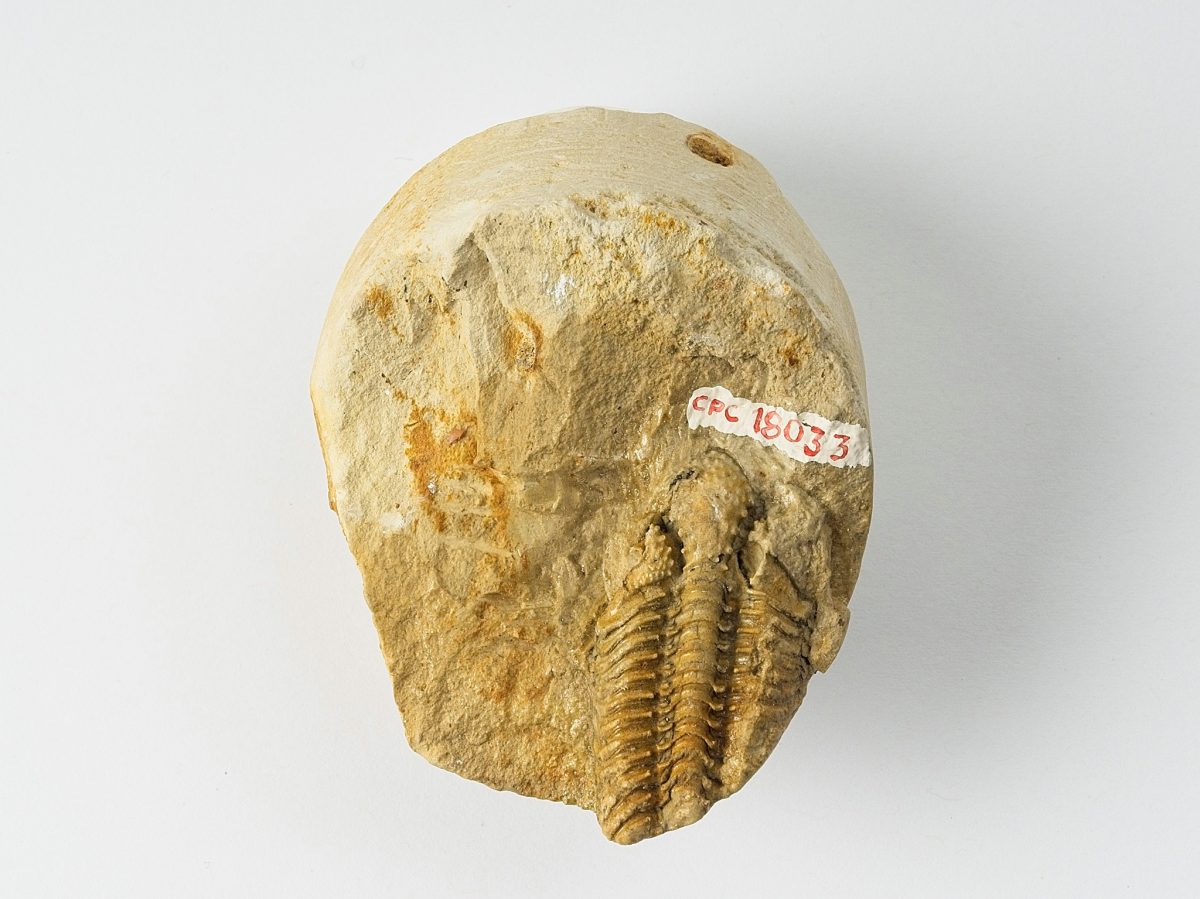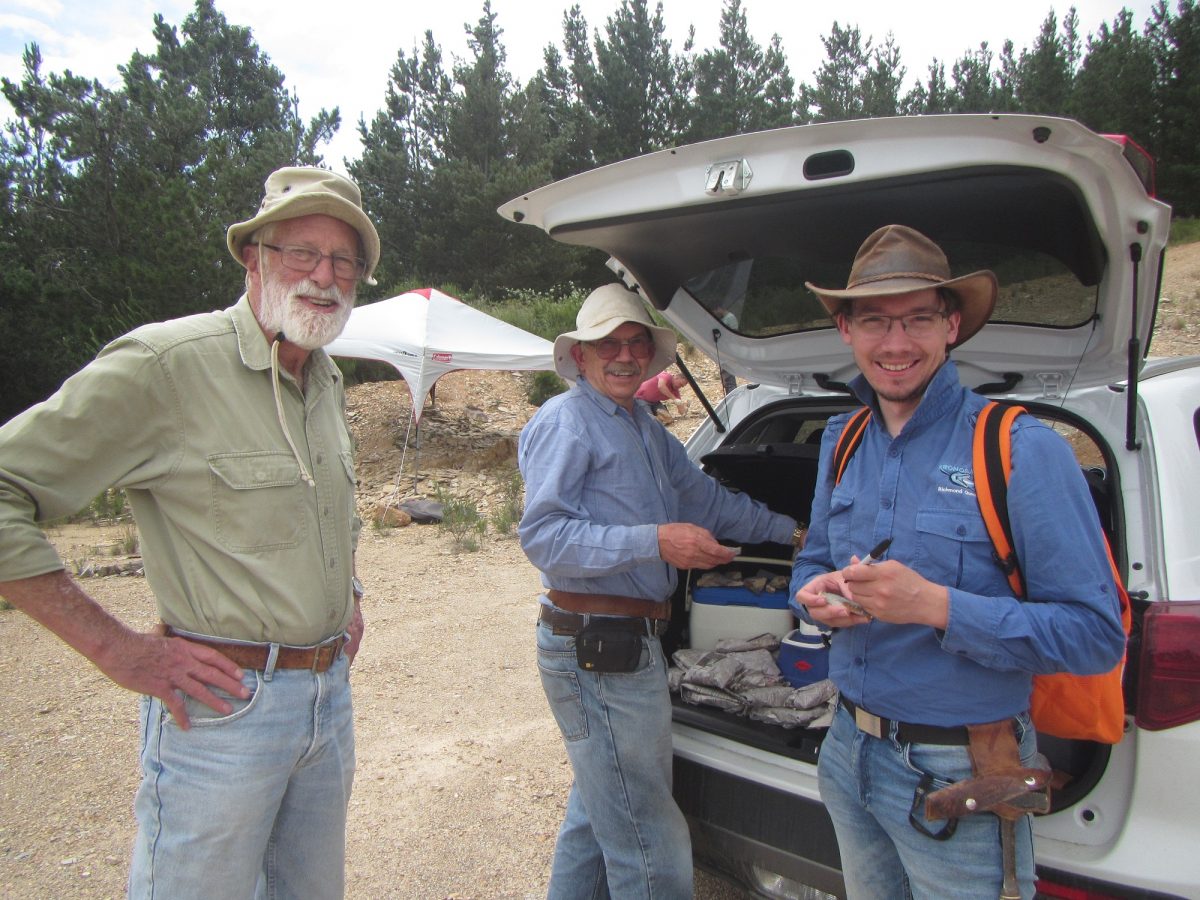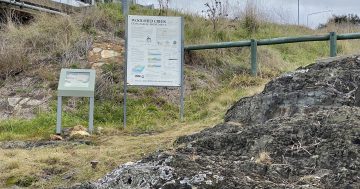
The ACT’s fossil emblem, Batocara mitchelli. Photo: Geoscience Australia.
The Royal Bluebell, Gang-gang Cockatoo and Southern Brush-tailed Rock Wallaby have been joined by a new companion on the list of the ACT’s emblems.
Batocara mitchelli has been formally adopted as the ACT’s fossil emblem after it beat five other fossils in a public vote. It won a 30 per cent (1100) share of the votes.
The announcement brings the ACT in line with the other states and territory, each with their own floral, faunal, mammal and fossil emblems.
Paleontologist Dr Patrick Smith has spent years researching and digging up these fossils for the Australian Museum, including around Canberra. He, for one, couldn’t be happier.
“It’s something that represents Canberra as a fossil really well,” he says.
Batocara mitchelli is a species of trilobite, an extinct group of marine arthropod. An arthropod is an invertebrate with a jointed exoskeleton – think spiders, scorpions, ticks, mites, slaters, centipedes and millipedes, to name a few common examples.
“There are several tens of thousands of species of trilobites we know about, but there could be millions,” Patrick says.
“They are believed to have existed from what we call the Early Cambrian period, which is about 520 million years ago, all the way up to the end of the Permian period, 250 million years ago, when they were wiped out.”

Batocara mitchelli fossilised. Photo: Geoscience Australia.
Batocara mitchelli is set apart by a sharply defined triangular tail section and a bulbous head, covered in “pustules”.
“Which is a fancy way of saying they look a bit pimply,” Patrick says.
Of all the trilobite fossils, it’s the most common species found within the ACT and beyond, with vast collections turning up from Yass in the Riverina region to Cobar in central western NSW.
Patrick says their presence proves the entire region was once under a vast amount of water. In the case of a trilobite fossil, minerals in the soil get to work dissolving the soft organic matter and replacing the calcium in the outer shell with iron.
“All of the atoms are basically replaced,” he says.
“But the trilobite isn’t entirely all gone, so it’s best understood as a infill of a mould of the original shape of the animal.”
The species has commonly turned up in fragments for years, especially at the fossil-rich mudstone rock outcrop at Woolshed Creek near Fairbairn Avenue. However, a complete specimen was found while drilling the foundations of the John Gorton Building (now Treasury) in the 1940s.
“Construction workers dug it up while drilling a core sample of the soil at the site,” Patrick says.
“It sounds like coincidence but I know of places where the fossils are so common in the rocks it’s almost impossible that they wouldn’t have hit one.”

Dr Patrick Smith (right), technical officer of palaeontology at the Australian Museum, on a fossil dig-site near Lithgow. Photo: Jodie Rutledge.
He says the sheer spread of Batocara mitchelli is one reason it’s the perfect fossil to represent Canberra.
“I’ve been at a location where four fossils have come out in one day, one by a child who dug it out and took it home.”
A lot of the other fossil emblems are relatively rare. For example, the state fossil for NSW, Mandageria fairfaxi, is a fish species only known for a couple of specimens from one location.
“If you’re going to pick a state fossil, pick one that’s common,” Patrick says.
“It’s also a visually, very interesting fossil. It doesn’t just look like it’s been splattered on the side of a rock.”
As with the other ACT emblems, there are no legislative requirements surrounding the use of the fossil emblem. It can be used by anyone on their publications, uniforms or websites.













